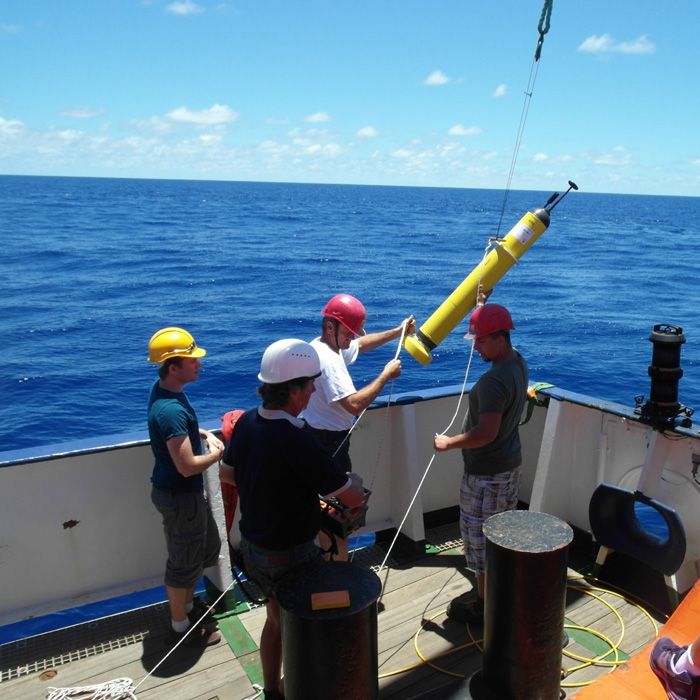
SAN FRANCISCO — The vast two-thirds of the planet that is covered by water is largely invisible to us. But now, researchers are trying to map the areas of the deep ocean and beyond using seismic equipment.
The idea, described here Monday (Dec. 9) at the annual meeting of the American Geophysical Union, is to place hundreds of floating seismic devices into the seas to measure the vibrations of earthquakes coming from the seafloor. The insights from the new devices could be used to understand processes that occur deep within the Earth's mantle. And the floating seismic stations have now passed their first tests on two real excursions, showing they can distinguish the sounds of relatively small-magnitude earthquakes from the din of whale calls, ships passing and other ocean noise.
Though seismologists track earthquakes from thousands of devices on land, just a few permanent island stations record earthquakes at sea. As a result, when waves from a deep earthquake travel through the Earth's mantle and core, most of a wave's path goes unrecorded, hidden in the depths of the ocean. [The 10 Biggest Earthquakes in History]
That makes it difficult for scientists to understand many fundamental processes that occur deep within the Earth's interior, Guust Nolet, a geophysicist at Géoazur, who helped develop the project, said in a news conference.
Floating seismic stations
To understand these mantle processes better, scientists need a way to track seismic waves that are only detectable in the two-thirds of the planet covered by the oceans. So Nolet and his colleagues have developed floating seismic stations.
The devices, called MERMAIDs (or Mobile Earthquake Recorder in Marine Areas by Independent Divers), combine a float with a microprocessor and a tiny underwater sound recorder called a hydrophone. The MERMAIDs can float down to a depth between 2,300 and 6,600 feet (700 and 2,000 meters) below the ocean surface and stay at those depths for up to 10 days, passively listening for the signature vibrations of earthquakes. The simple systems run on the same batteries that power a flashlight, and unlike existing sea-based hydrophones, which are often fixed to the seafloor, the MERMAIDs float with the current to investigate many locations. When they pick up a sound, a sophisticated algorithm filters the sound to distinguish earthquake vibrations from the sounds of fin whales, passing ships and other ocean noise.
Sign up for the Live Science daily newsletter now
Get the world’s most fascinating discoveries delivered straight to your inbox.
The "MERMAID is essentially a floating computer that never stops listening," said Yann Hello, director of research and development with Géoazur.
So far, the team has deployed two of the floating seismic stations in the Mediterranean Sea and two more in the Indian Ocean. Already, one of the devices detected a magnitude-5.0 vibration that triggered a swarm of 200 temblors.
"This was recorded nowhere else on Earth," Nolet said.
Now the team hopes to develop a next-generation of the device that can last for several years, plumb deeper reaches of the sea and harness the energy of ocean waves to run. Ultimately, they hope to deploy 300 to 400 of them across the world's oceans.
Follow Tia Ghose on Twitter and Google+. Follow us @livescience, Facebook & Google+. Original article on LiveScience.

Tia is the managing editor and was previously a senior writer for Live Science. Her work has appeared in Scientific American, Wired.com and other outlets. She holds a master's degree in bioengineering from the University of Washington, a graduate certificate in science writing from UC Santa Cruz and a bachelor's degree in mechanical engineering from the University of Texas at Austin. Tia was part of a team at the Milwaukee Journal Sentinel that published the Empty Cradles series on preterm births, which won multiple awards, including the 2012 Casey Medal for Meritorious Journalism.











